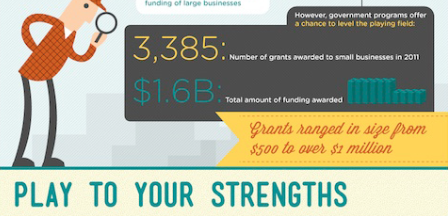An all-too-common yet unfortunate strategy for many small businesses is that they try to compete on price. The logic here is that if they keep their prices low, their more expensive competitors will get pushed out of the market.
It makes sense in some respects: Consumer discretionary spending is still weak despite the general improvement in macroeconomic conditions, and if that’s the case, then providing cut-rate deals and everyday low prices must be the only way to bring penny-pinching customers back. Even in the B2B sphere, there is a degree of caution being taken – businesses only want to spend on what is necessary and nothing more.
Why competing on price is dangerous for your business and industry
This is what you have to think about when you consider lowering your prices in an attempt to outmaneuver your competitors. The Small Business Association listed a number of reasons why you may want to think twice before you start slashing those price tags:
- Price often equals perceived value. While this doesn’t hold true in every case, there are a lot of situations where customers use price as a proxy for value. This means that they follow the belief of “you get what you pay for.” When you compete on price, you’re basically telling your customers that what you have is of low value. This is a major detriment to all of your efforts toward branding your business as a high-quality option.
- You get bargain hunters. This is the natural extension of the first point. When you compete on price, you attract people who want to save every nickel and dime they possibly can. These people never shop for value, and they’re always going to be looking for you to give them further discounts. To be blunt: These customers are almost never worth it. You’ll never be able to raise your prices again.
- The only way to profitability is to cut costs. If your prices are low, that means the only way you’re going to see desirable profit margins is if you cut your costs. Now, every business needs to keep its costs as low as possible in any situation, but when you’re racing to the bottom, it’s going to force you to compromise and eliminate expenses that might actually be worth it.
Reading these three points, we can start to see a theme emerging: Yes, price is a factor when people buy something, but what they really want is value. As Sara Jantsch of Duct Tape Marketing put it, people just want to know they’re being taken care of. When they can see they are getting real value and having an actual pain point alleviated, price almost becomes a triviality.
So how do you get out of the race to the bottom and stop competing on price? Here are a few tips to get you out of the price wars and competing on other battlegrounds:
Find out what makes you different and make your messaging reflect that
When you were planning and building your business, you likely came up with a Unique Selling Proposition – something that would make your business stand out among the crowd. That may still exist, but if you find yourself competing on price, it may be that your messaging doesn’t adequately reflect your business’s competitive advantage.
If this is the case, go through yours and your competitors’ websites, social pages and other marketing collateral and do a full comparison. What benefits are they touting? What language are they using? If you find that it’s all pretty much the same, it may be time to revamp your content to more accurately reflect what makes you a different – and hopefully better – choice.
Jantsch offers an interesting test: Pass out copies of marketing materials from yours and your competitors’ “About Us” pages to your friends, family and employees, but take the company names off them. See if anyone can tell which one is yours. This is a great litmus test to see if you’re forging a unique voice or if you’re just blending in.
Talk to your customers
This is straightforward enough: Reach out to new and existing customers and ask them why they decided to choose you. Not only will you hear about what makes you unique, but you’ll see what kind of language and benefits really hit home for the customers that are right for you. Having an accurate idea of who your customer truly is will help you tailor your messaging directly to them, while repelling the kind of people who are just looking for the biggest bargain.
Focus on value, not price
Ultimately, you have to find out why you’re valuable and focus solely on that. Understanding what kind of value you bring to the table is critical for business success because you’ll be able to charge prices that are representative of what you’re really worth. Use testimonials and case studies to show exactly what you can do and the kinds of results your customers can expect to see when they buy from you. When you can show that, price becomes a secondary concern.
What you can do right now:
Don’t waste anymore time underselling yourself. Use these takeaways to start charging your customers what you’re worth:
- Research your competitors and see what sort of language they use to describe themselves. Try the test that Jantsch offers to see if anyone can really tell you apart.
- Gather case studies and testimonials that prove that you’re valuable at any price point.
- Talk to your customers to learn more about what they already like about you.
- How to Use Business Technology to Thrive in the Future of Hybrid Work - October 19, 2021
- The Breach Within – How to Address the Risk Employees Pose to Your Cybersecurity - September 9, 2021
- The Future of Remote Work and How Collaboration Is Evolving - August 30, 2021



